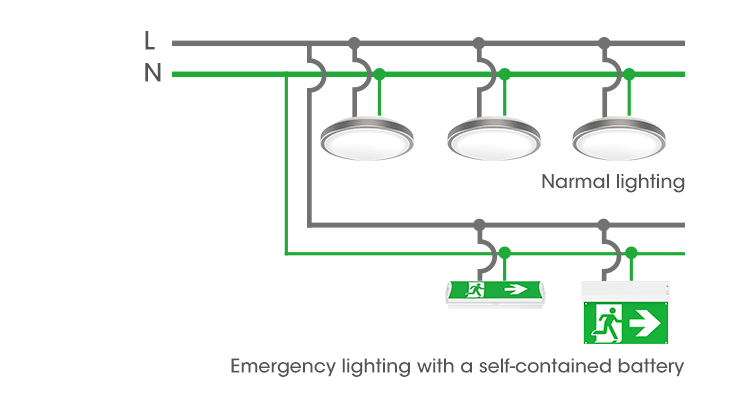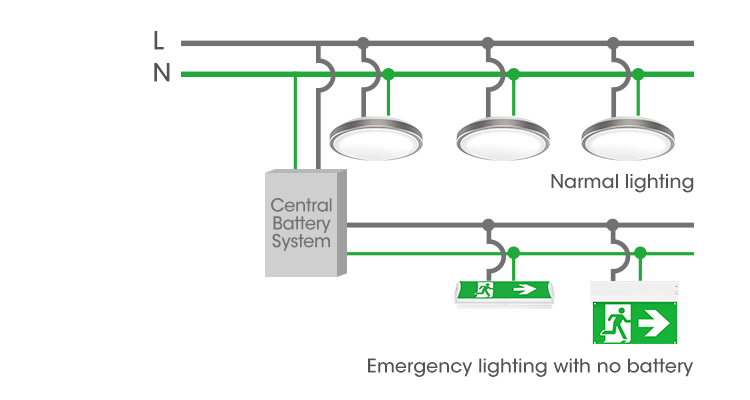Self-contained Emergency Lighting VS Central Battery Backup Emergency Lighting
Emergency lighting is designed to illuminate escape routes through buildings so that people can leave safely.
It also has the function of effective marking and simultaneous illumination of safety equipment such as first aid points, fire alarms, and firefighting equipment.
How to choose?
Both self-contained and central power supply systems have their own merits depending on the project, generally, the decision to use either a central battery or a self-contained system is likely to be cost determined. If an installation has longevity low maintenance as a priority then central battery may be the best option. If it is just a case of capital expenditure, and longevity and low maintenance are not significant factors, then self-contained is the best option.
Both self-contained and central battery systems have their own advantages and disadvantages depending on the project. If longevity, maintenance costs, and shipping costs are a priority, you could choose central battery systems. If the project is small and the price is a more important factor, then self-contained may be your option.
Wiring of Self-contained Emergency Lighting

Self-contained emergency luminaires offer the easiest and quickest solution as they contain their own batteries and operate independently. They are easy to install, easy to expand or change, and are usually suitable for small to medium projects. Installation costs are relatively cheaper, no special wiring is required, and they provide higher system integrity because each luminaire is independent of the others, so no special subcircuit monitoring is required.
However, the battery may also be affected by different systems or environmental conditions. Maintenance costs are high and since their battery life is only 3-5 years, replacing batteries can be a huge expense for building operators. This can also be affected by the environmental conditions which may vary from the system, and batteries may be affected by relatively high or low temperatures.
Wiring of Central battery systems

Central battery systems are often used in large projects with hundreds of emergency lights. For large buildings, a central battery would be the best option to keep maintenance costs to a minimum. AC/AC static inverter systems can be connected directly to mains luminaires without any modification, and they operate at full light output under both ‘mains healthy’ and ‘mains failed’ conditions. Control of maintained lights or signs under the central battery system is controlled by a sub-circuit monitor, which will power the system in the event of a sub-circuit failure.
Another major advantage is battery life in a central system is maximized and is usually at least 10 years. Quick and easy replacement avoids disruption caused by having to access and remove numerous accessories in common areas.
The central system is easy to test, easy to maintain and has great cost advantages.
CONCLUSION
| Self-contained emergency lighting | |
|---|---|
| advantages | disadvantages |
| Cheaper and easier to install | Affected by the environment or temperatures |
| Requires only AC power | Lower light levels compared with central battery |
| Standard wiring | Replaced the battery regularly |
| System integrity due to luminaire independence | |
| Reduces the expenditure on professional equipment | |
| Central battery system | |
|---|---|
| advantages | disadvantages |
| Convenient for testing | Check daily. |
| Battery life ranges from five to fifteen years | Higher equipment cost. |
| Can operate at relatively high or low temperatures with minimal impact on the battery | Higher costs for installation and wiring |
| Failure of the battery or circuit can cause other failures in the system | |
| A place dedicated to the central battery system and circuitry. | |
| Additional ventilation systems may be required. | |
| Requires extensive subcircuit monitoring | |